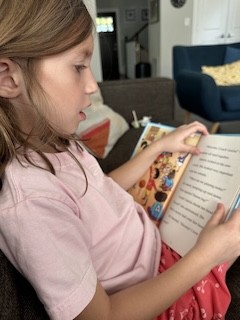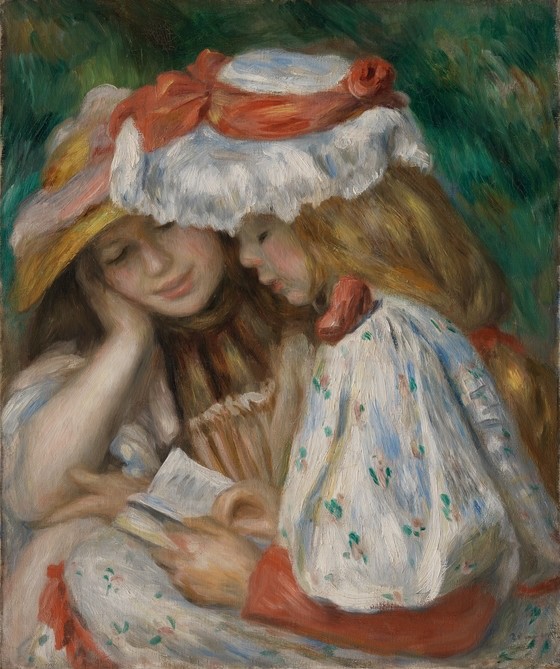Over the past few weeks, I’ve had several inquiries about the importance of whole book reading within reading instruction. And no wonder. Social media has been aflame with righteous claims about this purported and purportedly damaging shift to having students read excerpts within reading lessons rather than taking on whole books.
I say “purported” because the claim seems to be that in the past teachers were teaching their kids to read books, and now they aren’t. I’ve been around quite a while, and I don’t remember the past that way.
I say “purportedly damaging” because the idea that teaching reading with excerpts harms kids or limits their learning in any significant manner is a claim made without evidence – you know, an opinion. Not only do we lack research showing that books do a better job of increasing reading ability, we have no evidence that one approach does more to encourage kids to read on their own.
It’s important that I point out here that I’ve worked on various textbook reading programs, on and off, for almost 50 years. All those programs from various publishers depended heavily on short stories, magazine-style articles, and excerpts from longer works. Those programs have also usually included options for book-length texts as well.
I’ve engaged in that work not because I thought shorter works were necessarily better than books when it comes to teaching reading, but because I see it as a reasonable option. In other words, I’m not against using complete books to teach reading, I’m just not persuaded that it’s necessarily the best way to go.
This is the kind of question I’d like to answer with research. I’d love to say that “Smith and Jones (1998) found that teaching reading with books increased reading levels by 26 points over what resulted for the excerpts group.” Or vice versa.
The problem is that there is no such research.
The major claim that books outdistance shorter works is that they somehow foster greater “reading stamina.” That sounds important, though the assertions are decidedly foggy. For example, how does one measure stamina? That concept is more complicated than it might appear at first blush.
Even more hazy is instructional guidance for teachers. What grade levels are we talking about? How many books should be used for instruction in a school year? And, most importantly, how are these books best taught?
As regular readers of this blog know, I’ve been flamed over the years for discouraging high school English teachers from reading novels to their classes (or using Audible or its competitors to do this for them). Book teaching may be a wonderful practice but is the point for the kids to know the books or for them to know the books through their own reading efforts? I’ve argued for the latter, but many whole book proponents seem to be on the other side of that discussion.
It seems to me that there are (at least) two factors in reading stamina. The first of these has to do with being able to process words and ideas continually for some length of time. You know, sustaining attention. Can a student, for example, productively read a 1000-word passage with comprehension – and without interruption (neither stopping to check messages or to respond to teacher queries)?
Each year, we’d like to see kids making progress in this kind of stamina – increasing the numbers of words/pages/minutes they can productively keep reading.
I see no reason why this would be better accomplished with Charlotte’s Web in its entirety than with a tall tale about Paul Bunyan or a chapter from E. B. White’s classic. If we are striving to increase students’ sustained attention from 250 to 500 words, one won’t find a 30,000-word text to be more salutary than a 1,500-word one.
There is another aspect of stamina that may be easier to encourage with book-length engagements, though even this may be addressed successfully with shorter selections. Books used for instruction tend to be experienced as a series of related excerpts. Monday and Tuesday we’ll take on chapter 1, and on Thursday, perhaps, we’ll proceed to the second chapter. After several weeks (depending on the length of the book and the depth of the teaching), that book will have been “read.”
That approach–if successful—requires that students retain memories from one chapter to the next while formulating their understanding of the entire book. That is a form of stamina, too. It requires a continuous cognitive effort to remember and use text information over a longer stretch than would usually be required with a series of random excerpts.
However, it would be the rare program that presents reading instruction as a series of random excerpts – the texts tend to be organized around authors, topics, and/or text features. That means that students need to use information from one text when taking on another – though typically there wouldn’t be as many excerpts in such a series as one would find with most novels.
My point isn’t that there is no cultural benefit to be derived from having read The Scarlet Letter, The Great Gatsby, or Beloved in their entirety. Those are wonderful books and the more kids who know them the better. However, I also think it’s wonderful for kids to get to know Steinbeck, Salinger, Morrison, Fitzgerald, Hemingway, Hawthorne, Melville, Lee, Knowles, Crane, Golding, Dickens, Homer, Frank, Bradbury, Wiesel, Twain, Atwood, Doerr, Lowry, Kesey, Keyes, Smith, Hinton, Updike, Orwell, and so on. There are so many fine authors and wonderful books, stories, plays, and essays, that a whole book curriculum is certain to be deficient when it comes to familiarizing students with this range of voices.
I think it’s quite reasonable to include some complete books in a curriculum. But, even with that, I would want that teaching to be balanced with enough shorter works to ensure an appropriate breadth of reading experience.
What can we say with certainty?
(1) Complete books have never played a big role in American reading instruction, grades K-5. There have been exceptions to this, of course. Programs like Units of Study – though short on teaching – encouraged kids to read lots of complete books (though often not the kinds of texts the whole book advocates may be imagining).
(2) Secondary school teachers have usually included more books in their English classes than has been common in the elementary years – focusing heavily on plays, novellas, and reasonably short novels. But even there an emphasis on excerpts and shorter works has been ubiquitous for generations. Various surveys conducted over the past 40 years or so, suggest that secondary teachers have continued to emphasize certain books over that time period, but they do not reveal whether there has been a shift in the numbers of those books taught or the numbers of classrooms teaching them (Applebee, 1989; Applebee, 1993; National Council of Teachers of English, 2025; Seaman & Seaman, 2023).
(3) There is no research showing that books are superior to excerpts or that excerpts are superior to books when it comes to developing reading ability.
(4) It is important to remember that the reading one does in an English class for instructional purposes is not the only reading in which students should be engaged. It would be wise for parents and teachers to promote this idea heavily, and to encourage the reading of some of those wonderful classic novels beyond the classroom. Adolescents must take some responsibility and play some role in their own education, and the adults around them need to encourage good choices in those regards.
(5) There is no reason why schools cannot combine both excerpts and whole books in their English Language Arts instruction – fostering both depth and breadth.
References
Applebee, A. N. (1989). A study of book-length works taught in high school English courses. Urbana, IL: National Council of Teachers of English.
Applebee, A. N. (1993). Literature in the secondary school: Studies of curriculum and instruction in the U. S. Urbana, IL: National Council of Teachers of English.
National Council of Teachers of English. (2025). The state of literature use in U.S. secondary English classrooms: A public report. https://ncte.org/blog/2025/07/literature-use-in-secondary-english-classrooms/
Seaman, J. E., & Seaman, J. (2023). Curriculum of many sources: Educational Resources in the U. S. K-12 Education, 2023. Oakland, CA: Bayview Analytics.
LISTEN TO MORE: Shanahan On Literacy Podcast







Comments
See what others have to say about this topic.